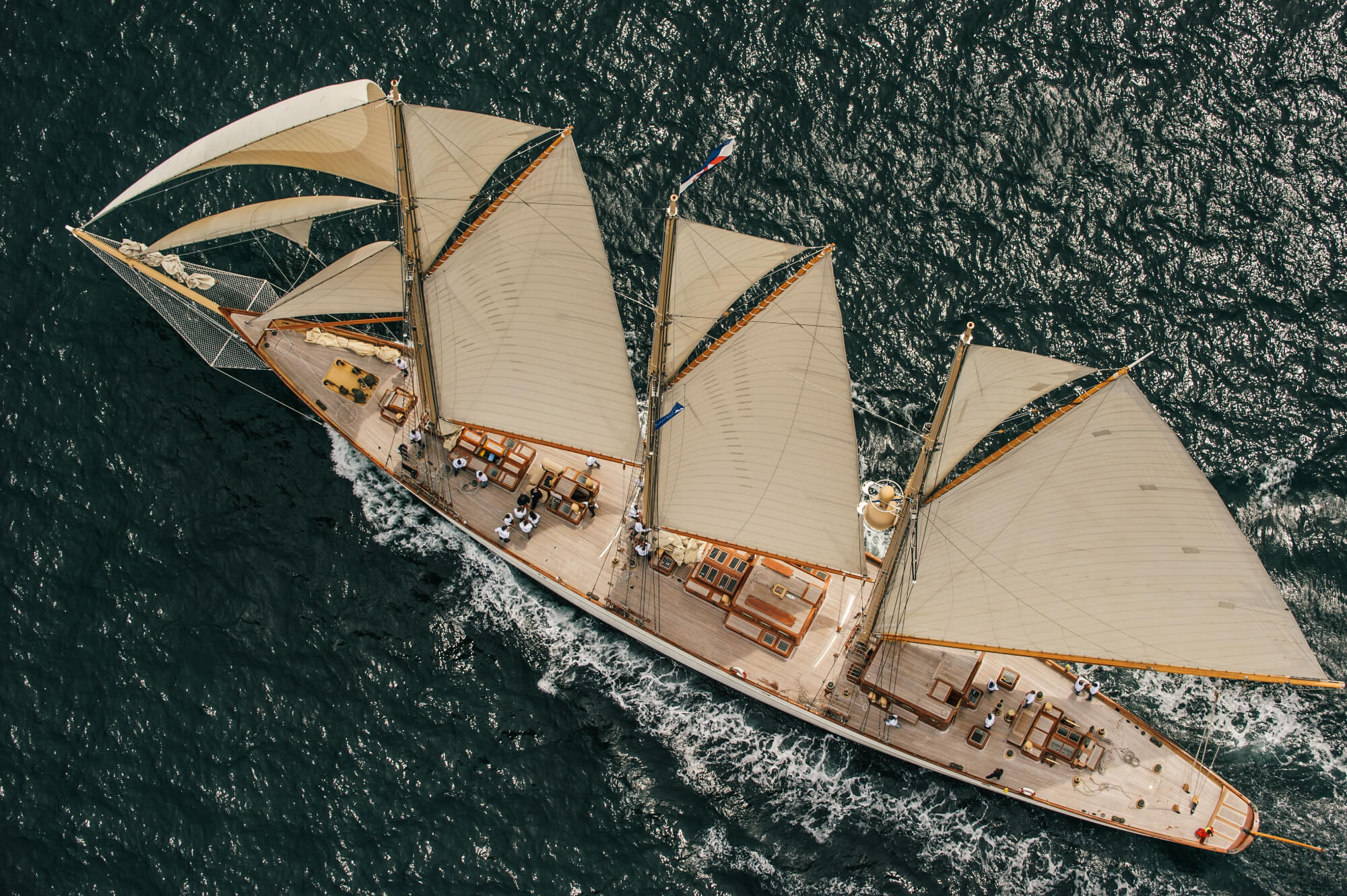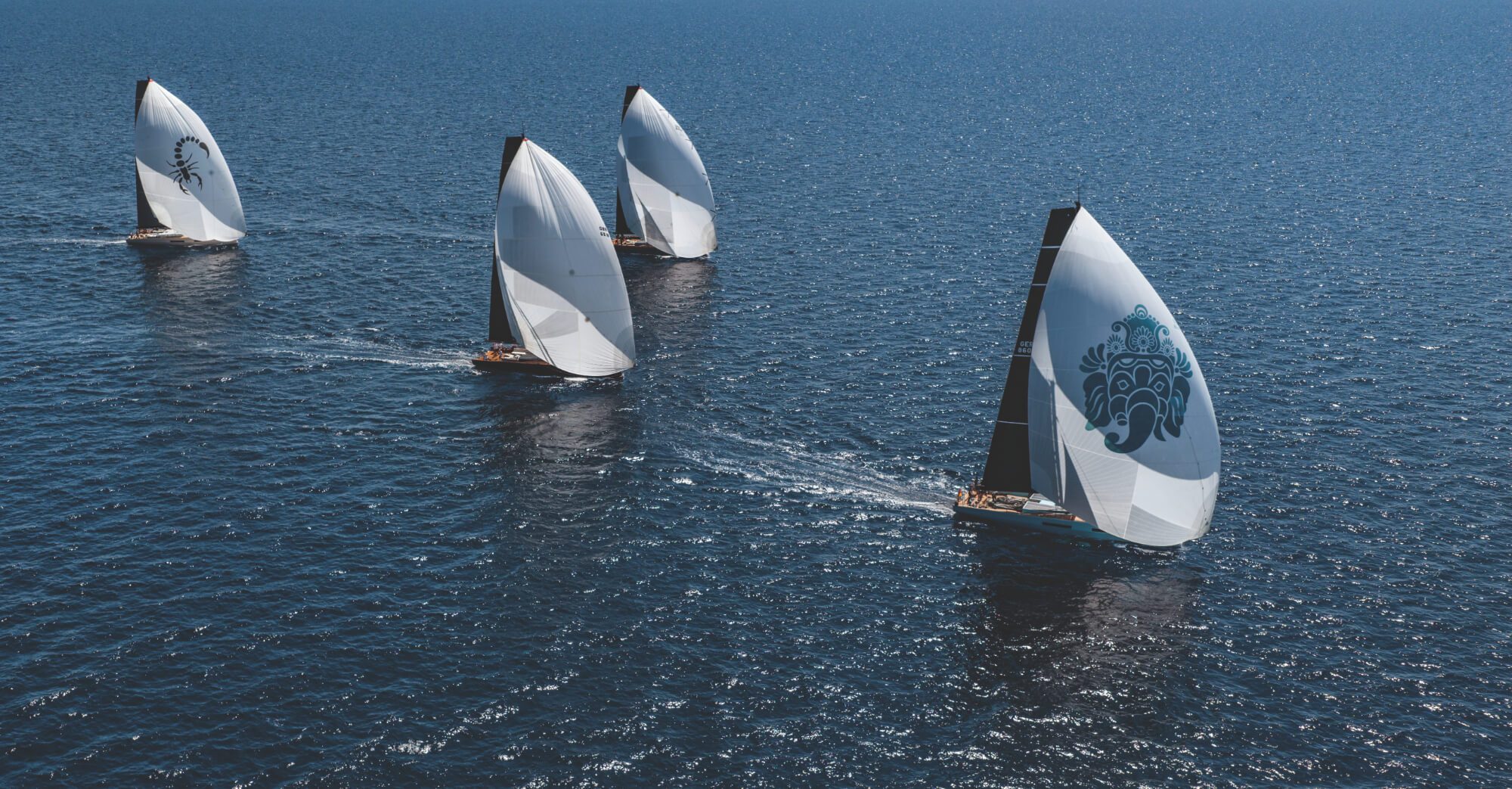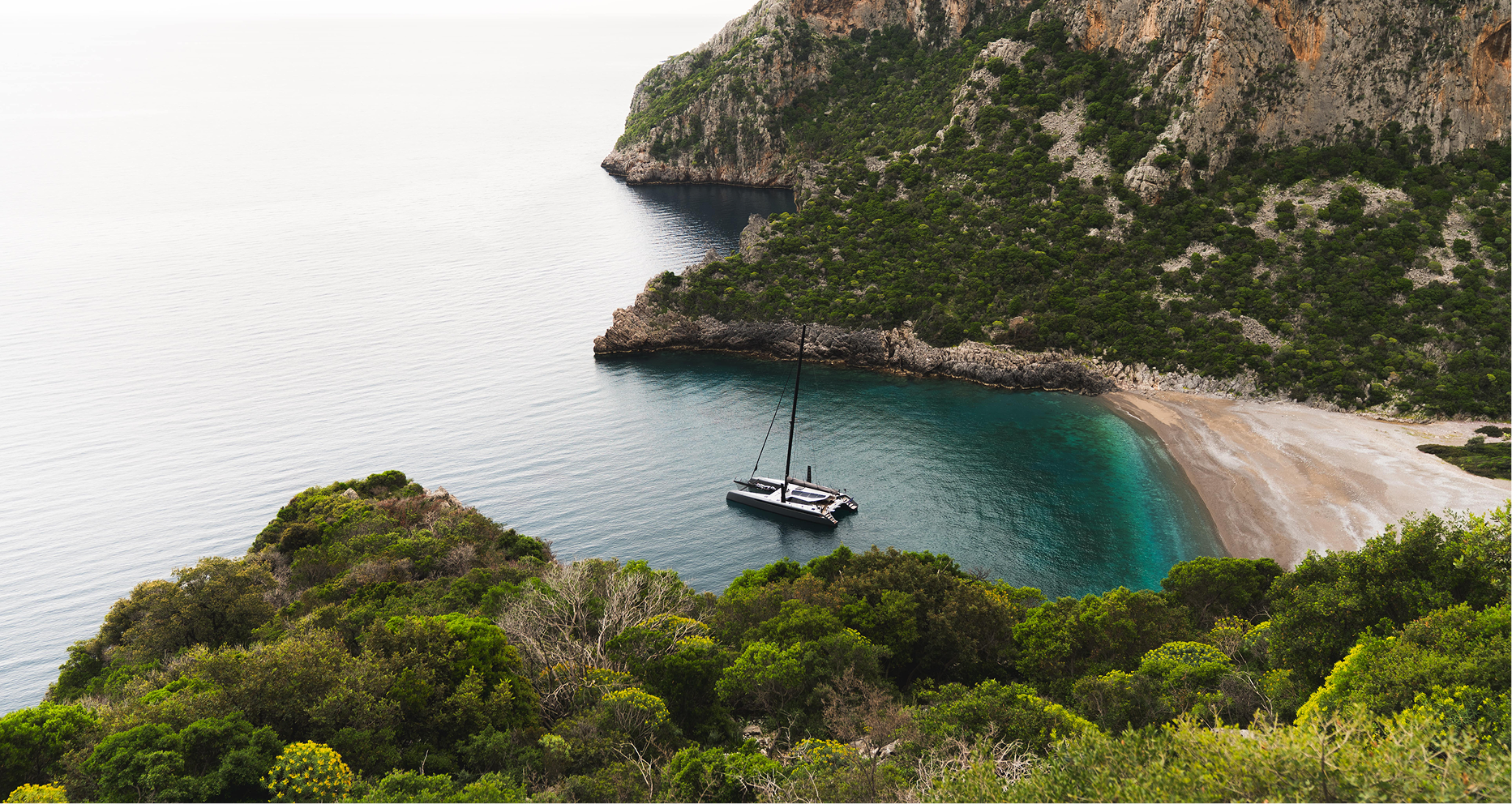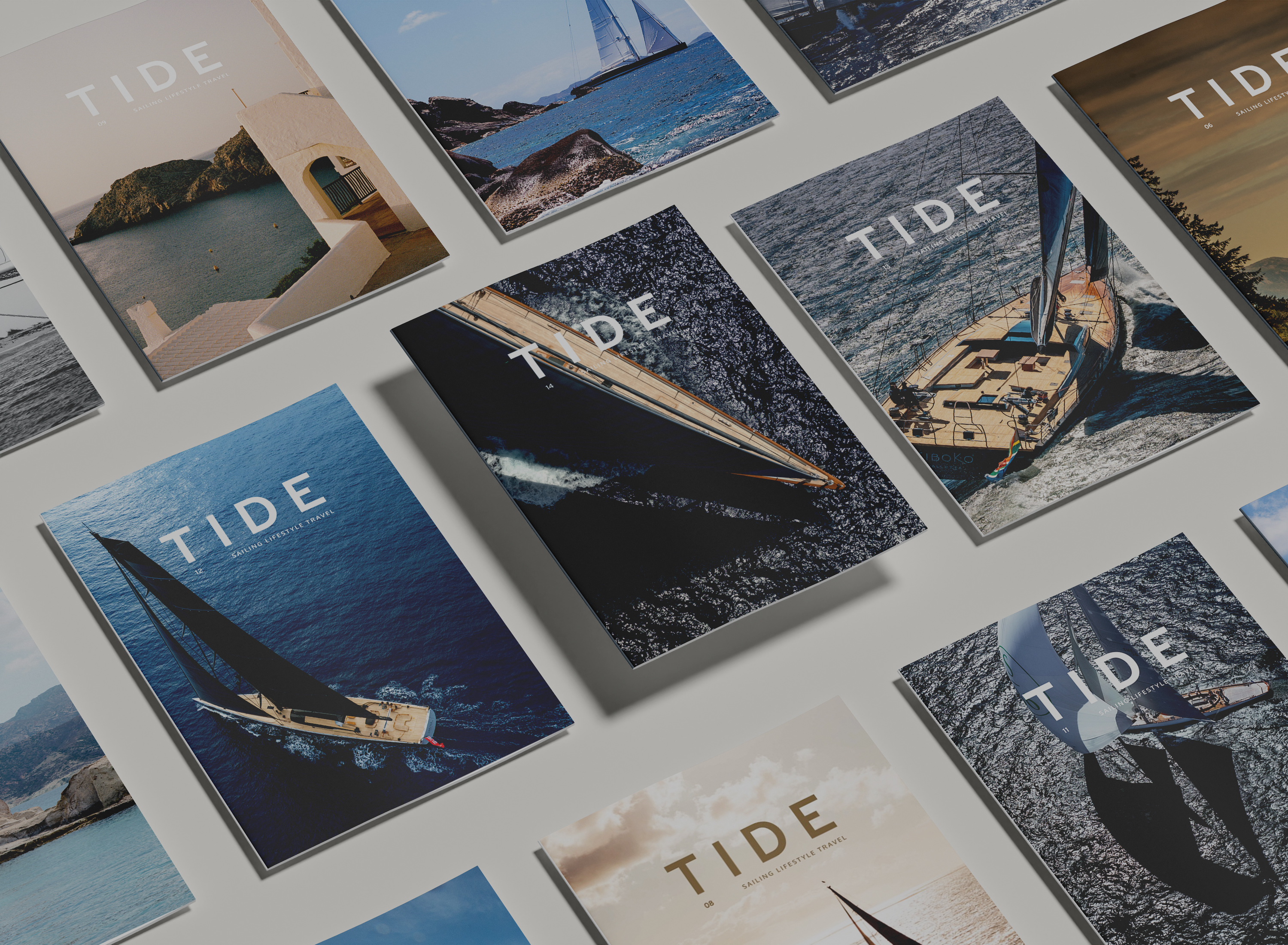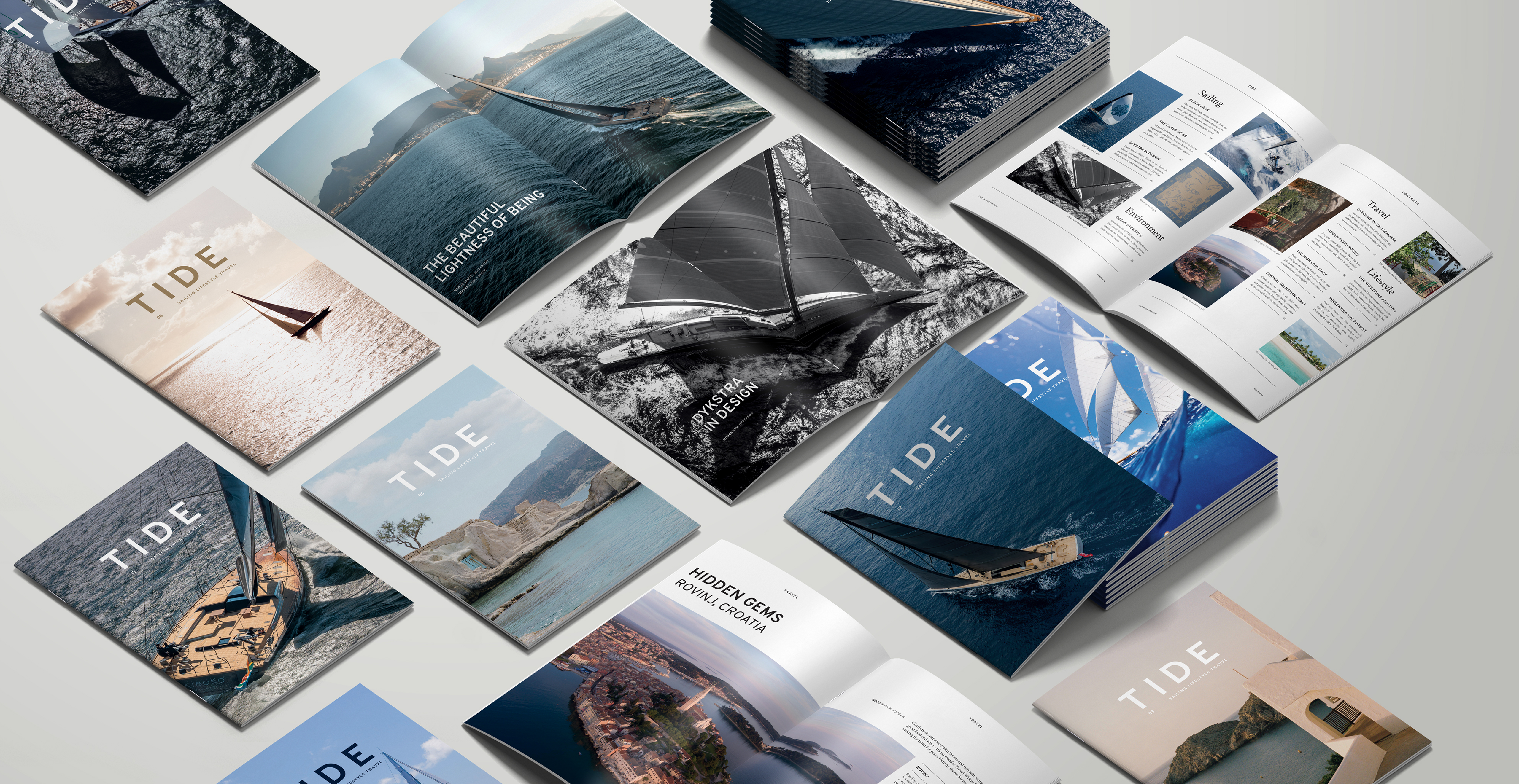With the upcoming launch of 63m Athos after the new owners refit, TIDE takes a look at some of the most famous schooners afloat today. Inspired by both past and future, these multi-mast vessels are hard to beat for a truly authentic sailing experience.
In marine lexicon, the word Schooner evokes historic imagery of billowing canvas, forests of spars, rigging and the seamanship of a bygone era. What gets less attention, however, is the contemporary coterie of these special two or three-mast vessels. A handful of Schooners still sail the world over, the crew earning their stripes as some of the most able yachtsmen and women on the water. This select fleet includes well preserved heritage pieces, historical replicas and modern state-of-the-art Superyachts, all sharing two things in common: a generous wardrobe of sails and a need for some serious sailing skill.
The practical argument for the multi-masted schooner rig may have diminished along with the world’s reliance on commercial sail, but the feelings stirred by these majestic creations of two or more masts are as strong as they ever were.
Past architectural masters such as Herreshoff, Burgess, Alden and Gardner are names synonymous with the Schooner, all having achieved great success by building on the heritage of their native Grand Banks fishing Schooners.
In 2014, a precise steel replica of the historic Grand Banks Schooner Columbia hit the water. Every inch of her is the picture of her 1923 namesake, following the original line drawings which were rediscovered decades later. The original was always intended to race, albeit against contemporary working craft, and the current incarnation was also built for a private owner - this time conducting charters as well. Columbia is a familiar sight all the way from the West Indies up to Newport Sound and beyond. Competing in this year’s Newport to Bermuda race, she shared the start line with high performance trimarans and the latest maxi yachts to sail a course that was once the sole preserve of the Schooner.
TIDE joined the boat for Antigua Classic Yacht Regatta earlier in the year granting us first-hand experience as to why these vessels held the monopoly on offshore racing - at least in America - until 1930. Standing abreast the mizzen mast as her full sail plan draws on a strong beam reach, the low-slung, broad-shouldered Columbia seemed to smooth the choppy Caribbean seas before her.
The three masted Schooners Adix and Atlantic, both measuring 56m on deck, are a step up from the working boat aesthetic of Columbia. Adix has sailed just about every ocean in the world, and is a regular in ports on both sides of the Atlantic. Attending the recent Fife Regatta on the Clyde in Scotland, Captain Paul Goss displayed admirable talent, sailing at times with only three crew on deck. In confined waters he demonstrated in spite of her size not only the versatility of the rig but the mettle that Schooner crew are known for the world over. A stint on a sailing Schooner does wonders for the CV of a budding yachtsperson, especially if that Schooner is Adix. Setting 1500m2 of sail area across nine sails upwind, it’s hard to argue any of these sails are easy to handle. However, through 33 years of work, remodelling and refinement, Adix is the epitome of the well found and smartly sailed Schooner.
Atlantic runs in a similar vein to Adix. As a three masted gaff schooner with heritage, she is a replica of a yacht of the same name built in 1903. The original was recognised instantly as a fast boat, achieving 20 knots in sea trials and everlasting fame for a 1905 transatlantic record that stood unbeaten for a remarkable 93 years. Recreated in 2010 by Schooner’s renaissance man Ed Kastelein after his previous success building Eleonora, the new Atlantic is fast living up to the reputation of her forebear. She has made frequent appearances in the Mediterranean, numerous ocean passages, and a circumnavigation under the command of renowned classic yacht Captain Jim Thom, who takes all her charter trips.
Fosse Fortuin, who captains while the owner is on board, is effusive about the vessel’s capabilities: “With gaff rigs like Atlantic there are just endless options of which sails to set, how to handle them, and how best to tackle the conditions.” Her striding motion was once described by a crewmate as ‘majestic urgency,’ and even Captain Fortuin, a seasoned schooner sailor, was taken aback at his first experience of over 17 knots boat speed.
The Schooner rig is not the sole reserve of the classics, though. ‘Spirit of Tradition’ pioneer Andre Hoek has turned to the rig for two of his most iconic yachts, 43m This is US (formerly Sea Biscuit) and 63m Athos. Balancing such sizable sail plans on fin keels comes with its own challenges, which require modern naval architecture and computer-aided design techniques to solve. The flexibility of the rig enables a setup for every wind strength and direction, that is typically matched with the Schooner’s forgiving underwater shape of traditional long keel hulls. Placing this atop a slender ‘canoe body’ hull and a fin keel requires careful calculation, achieved admirably by Hoek Design, whose two large Schooners have been cruising extensively for over a decade. This is US holds the accolade of being the only lifting-keel schooner in the world, combining deep draft passage making performance with the ability to tuck into more restricted anchorages and harbours.
Whether two or three-masted, the arrangement of a modern Schooner, much like its sail plan, is necessarily divided into well-defined and purposeful areas. Decks tend to be covered by tastefully taught awnings, creating luxurious shelter from tropical heat or temperate downpours, and extending the outdoor living space.
Speaking about the extensive refit of Athos, Hoek explains how the zoning of a Schooner, afforded by the natural placement of the rigs and sail-handling equipment, makes for the perfect creation of separate owner/crew spaces on deck. Hoek’s hallmark of deckhouses and cockpits for the exclusive use of owners and guests, linked to interior cabins, affords a level of privacy not normally associated with even the largest sailing yachts.
It’s not all about privacy though. In this year’s Les Voiles de Saint Tropez, twin-masted Elena of London once again strutted her stuff in an impressive display of blustery weather performance. With 41.6 by 8.1m of clean flush decks, there are very few who can lay down a stern wave so gracefully. Launched in 2009, she is a replica of Nathaniel Herreshoff’s 1911 original. The modern reincarnation of Elena was masterminded by her skipper, the eminent Scottish Captain Steve Mclaren, and is a regular on the Mediterranean classic regatta scene. So too, until recently, was her close counterpart, the ill-fated Eleonora.
The schooner class at this year’s Voiles comprised 7 yachts, with the aforementioned joined by Shenandoah of Sark and Naema; all racing for the regatta’s Rolex Trophy. The 44m three-masted Shenandoah was launched in 1902, extensively refitted in 2018, and when not putting in the odd regatta appearance is offered for charter. Hot on her heels the 2013, 35m Naema finished third overall, giving due credit to the 1938 Mylne design Panda on which she was based.
Designed with global range, these magnificent yachts are rarely fixed to one port and seldom in one place for long. Over a century since their first heyday, the chance to sail aboard a Schooner is just as unforgettable as it once was.


